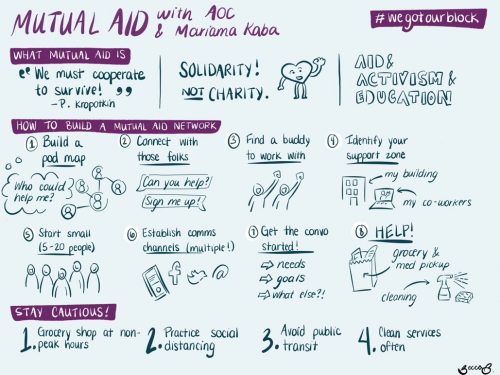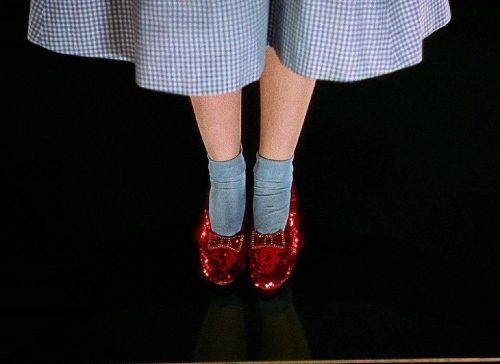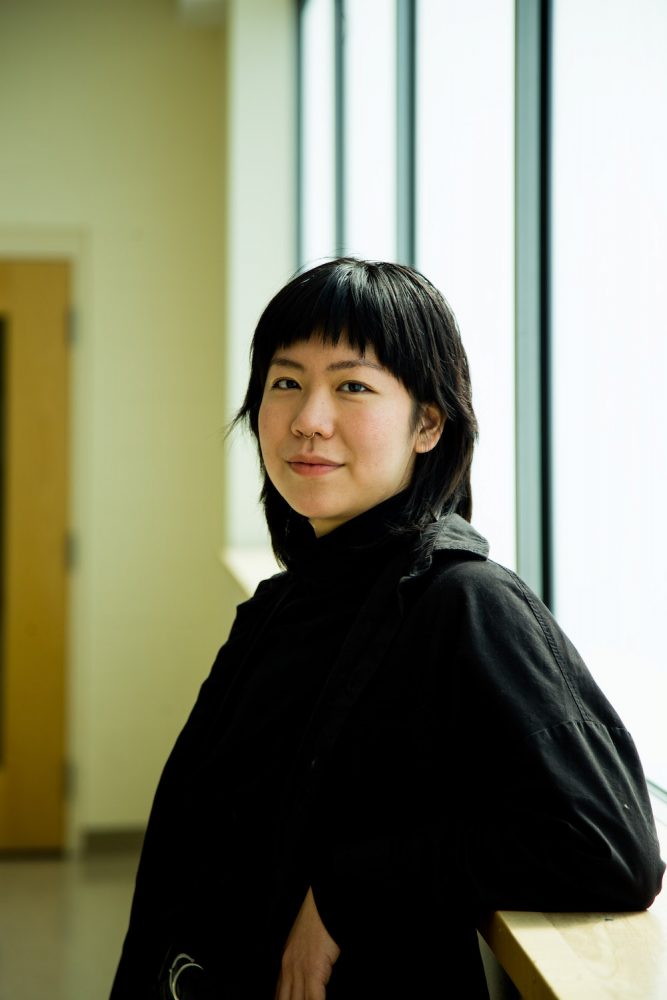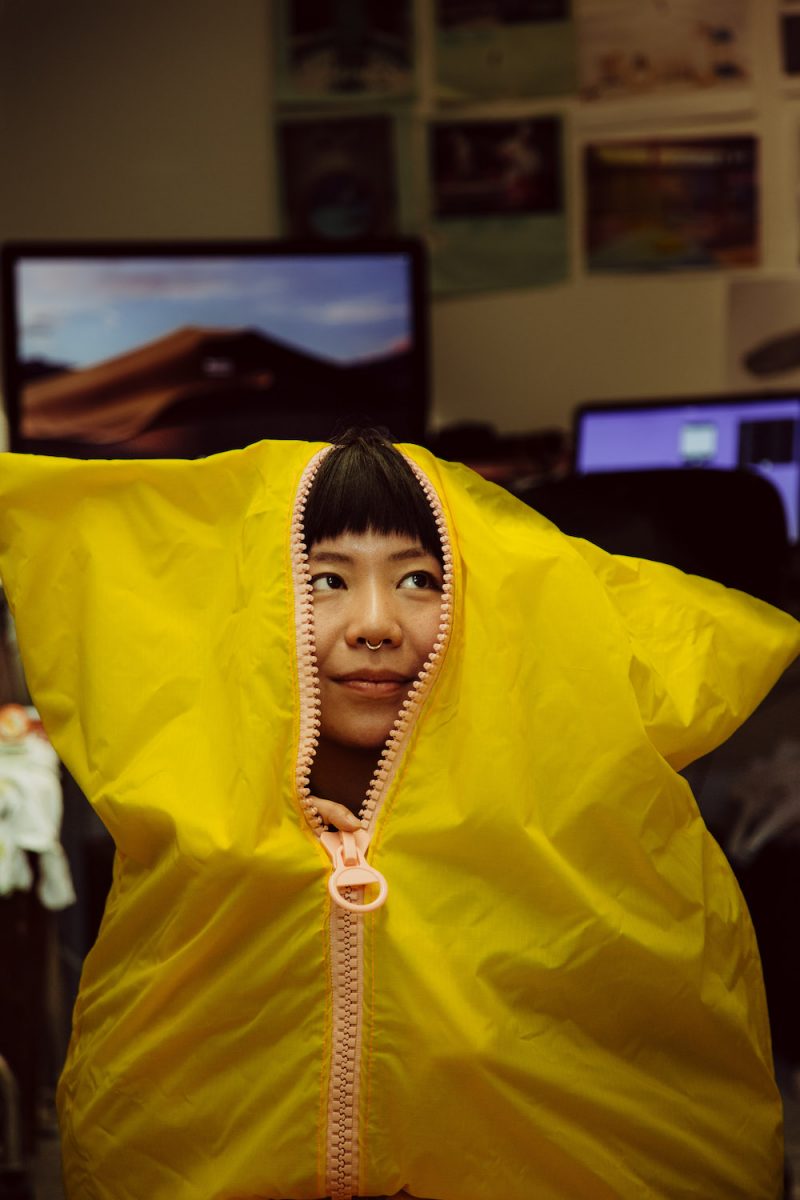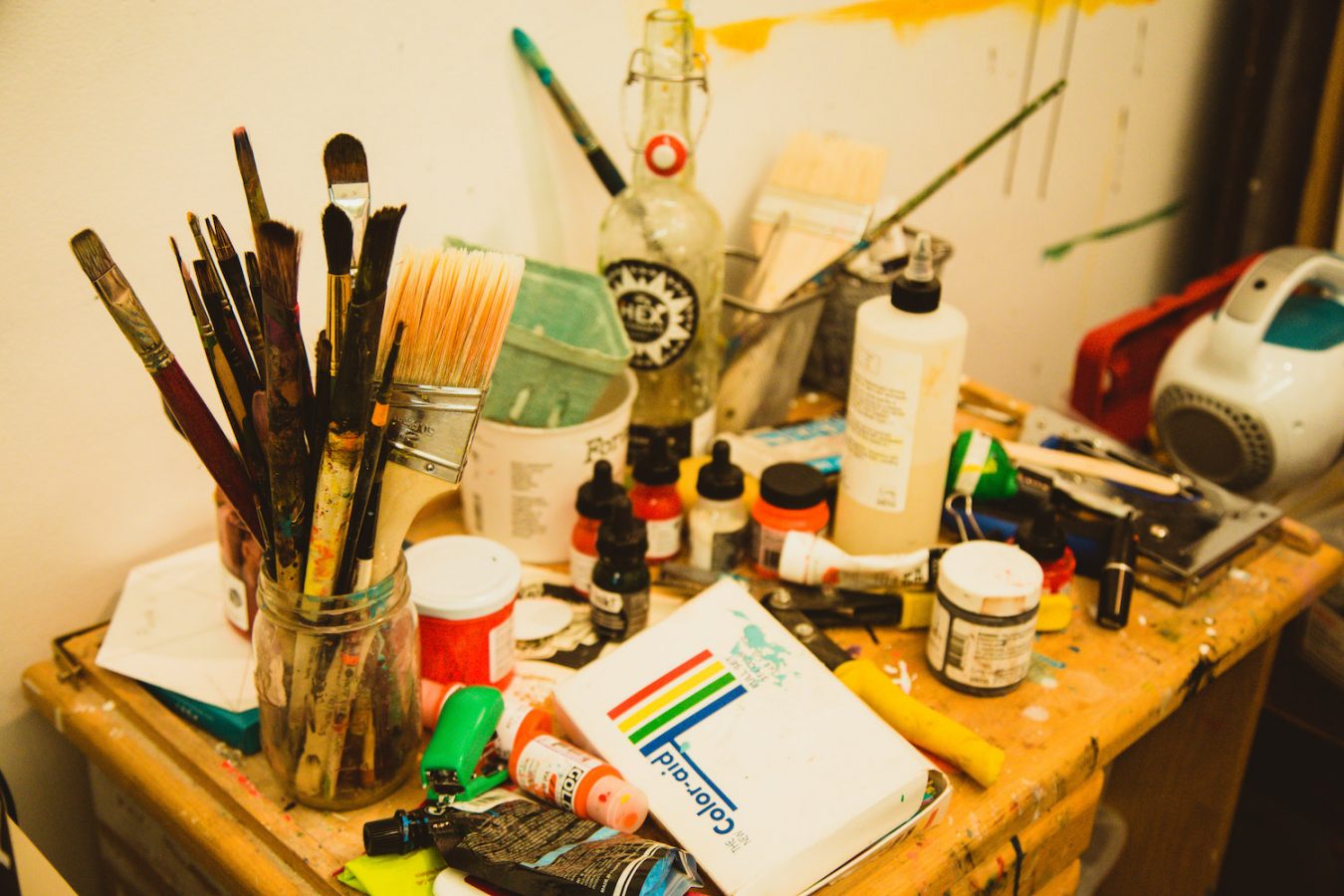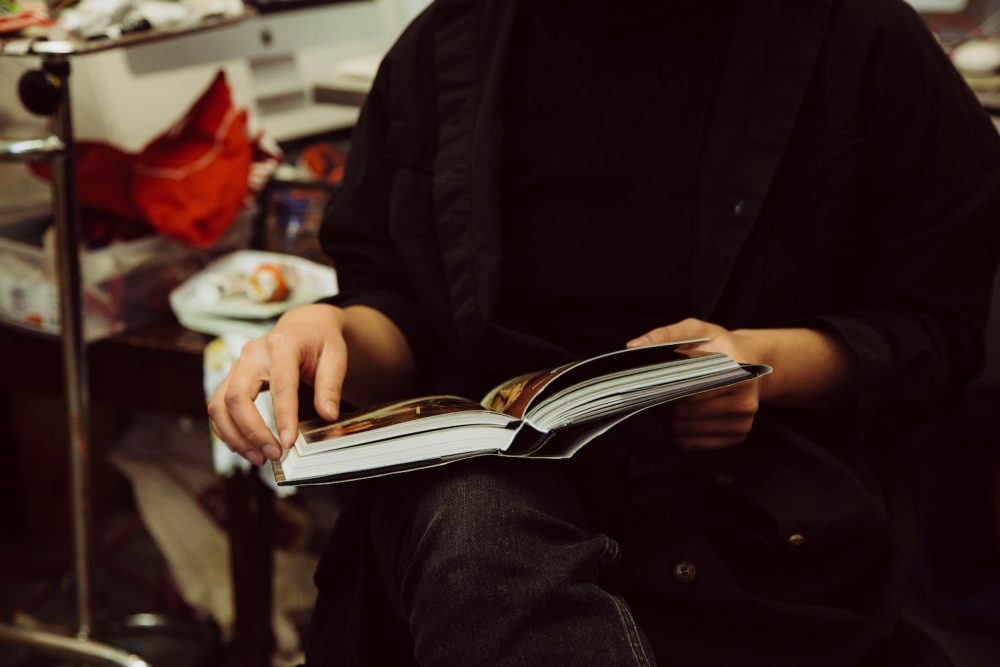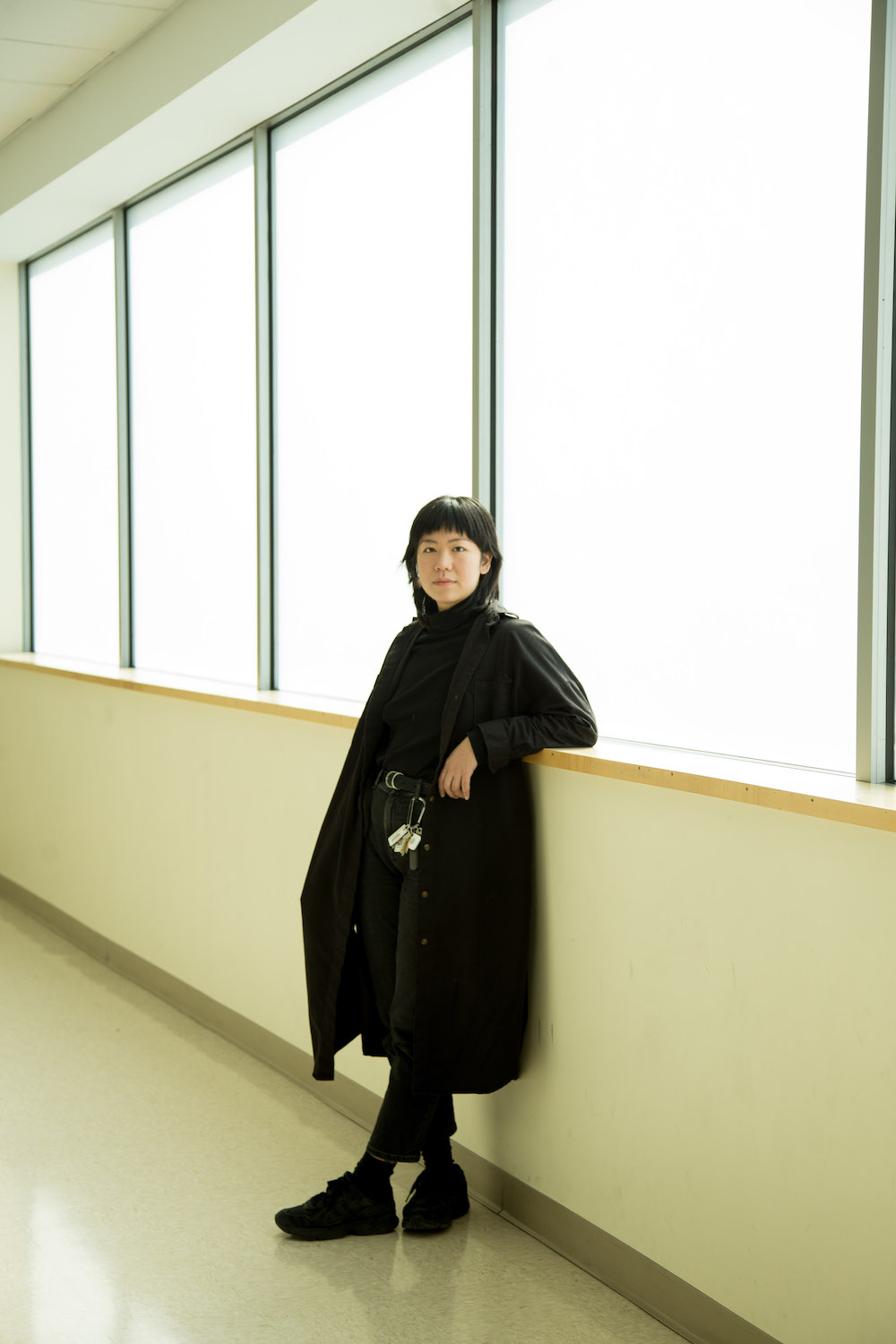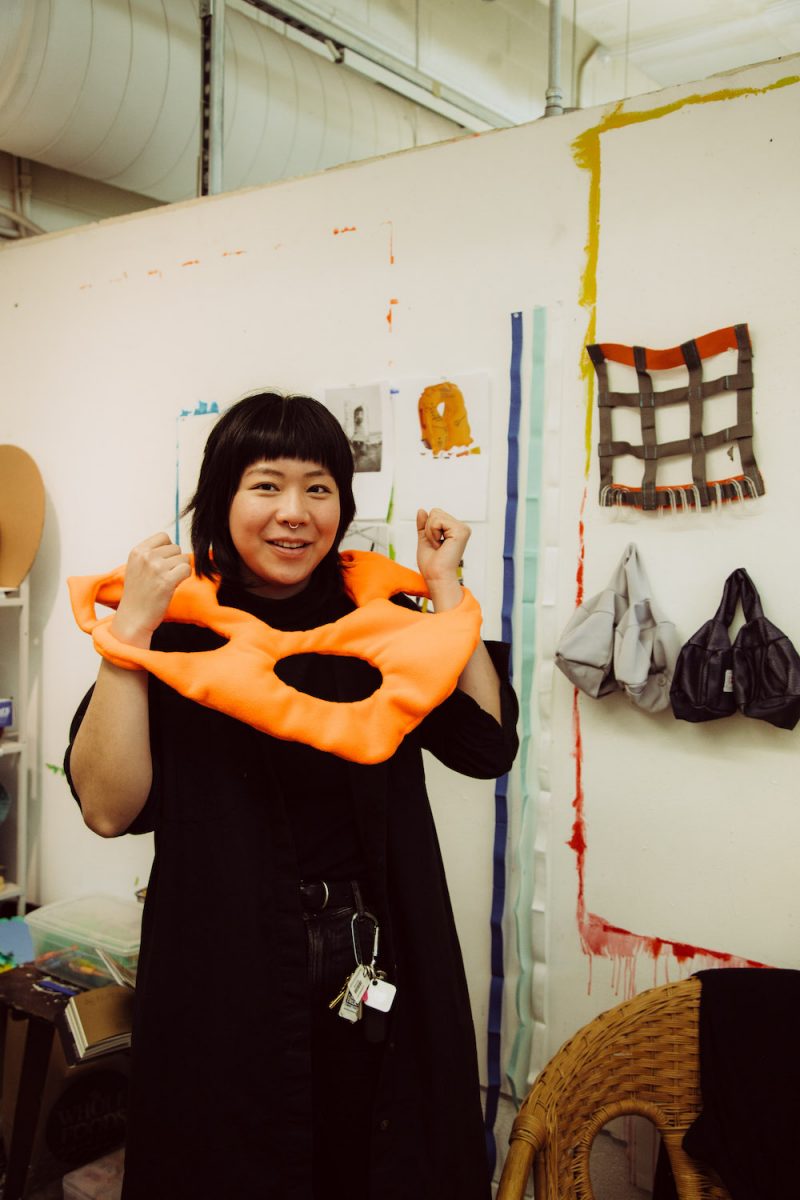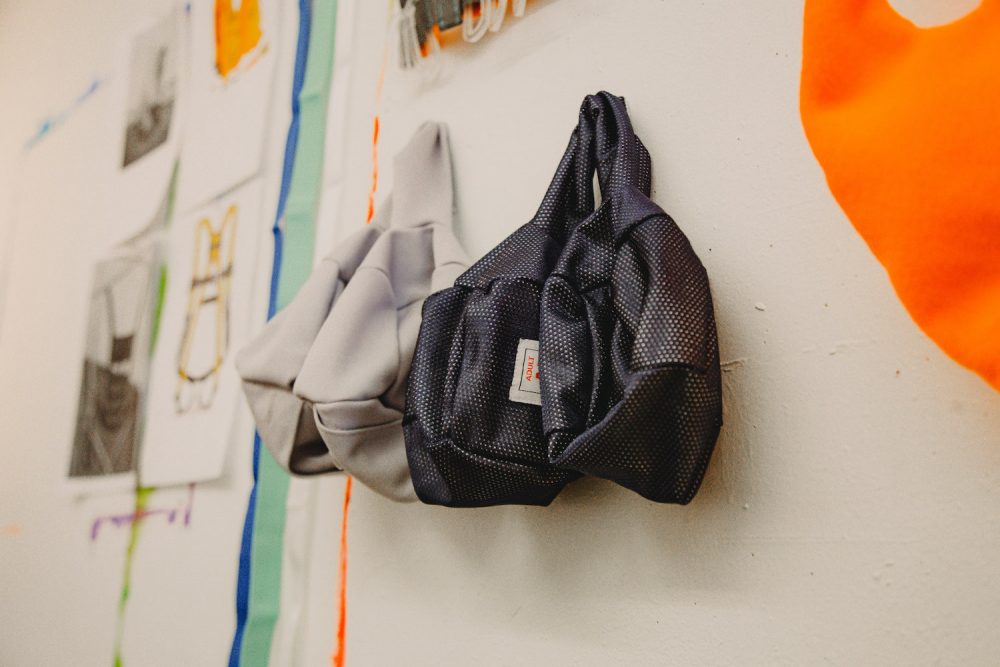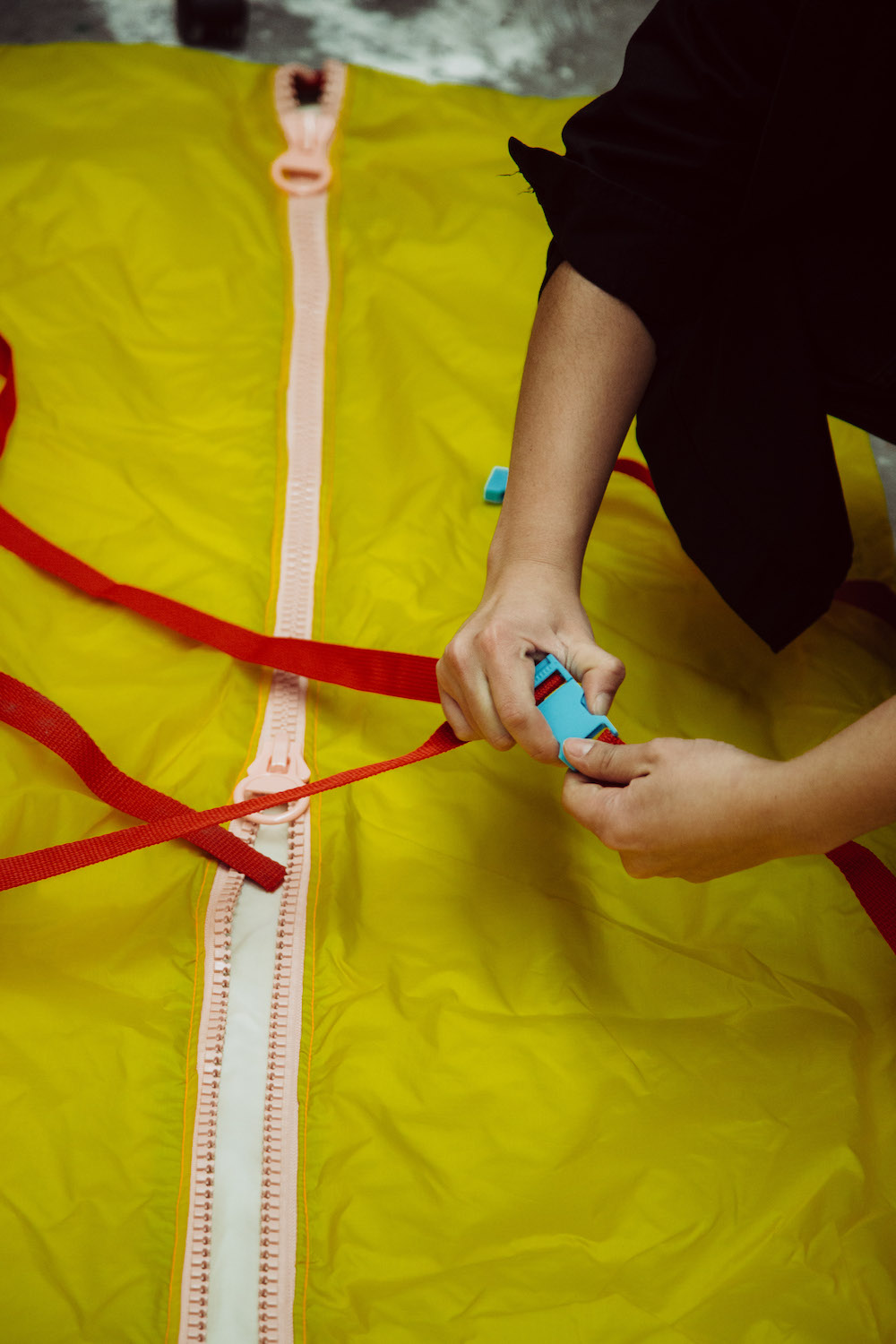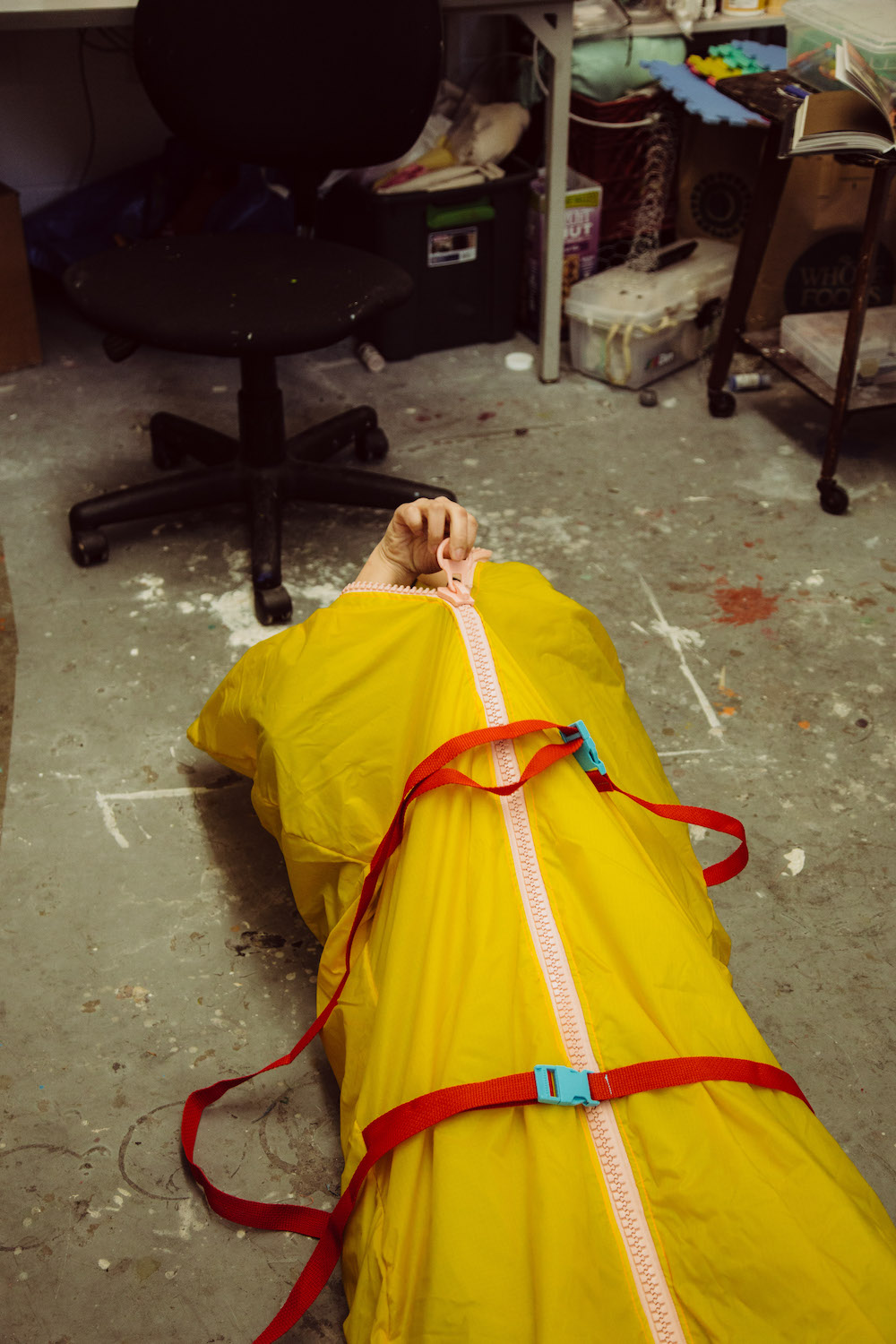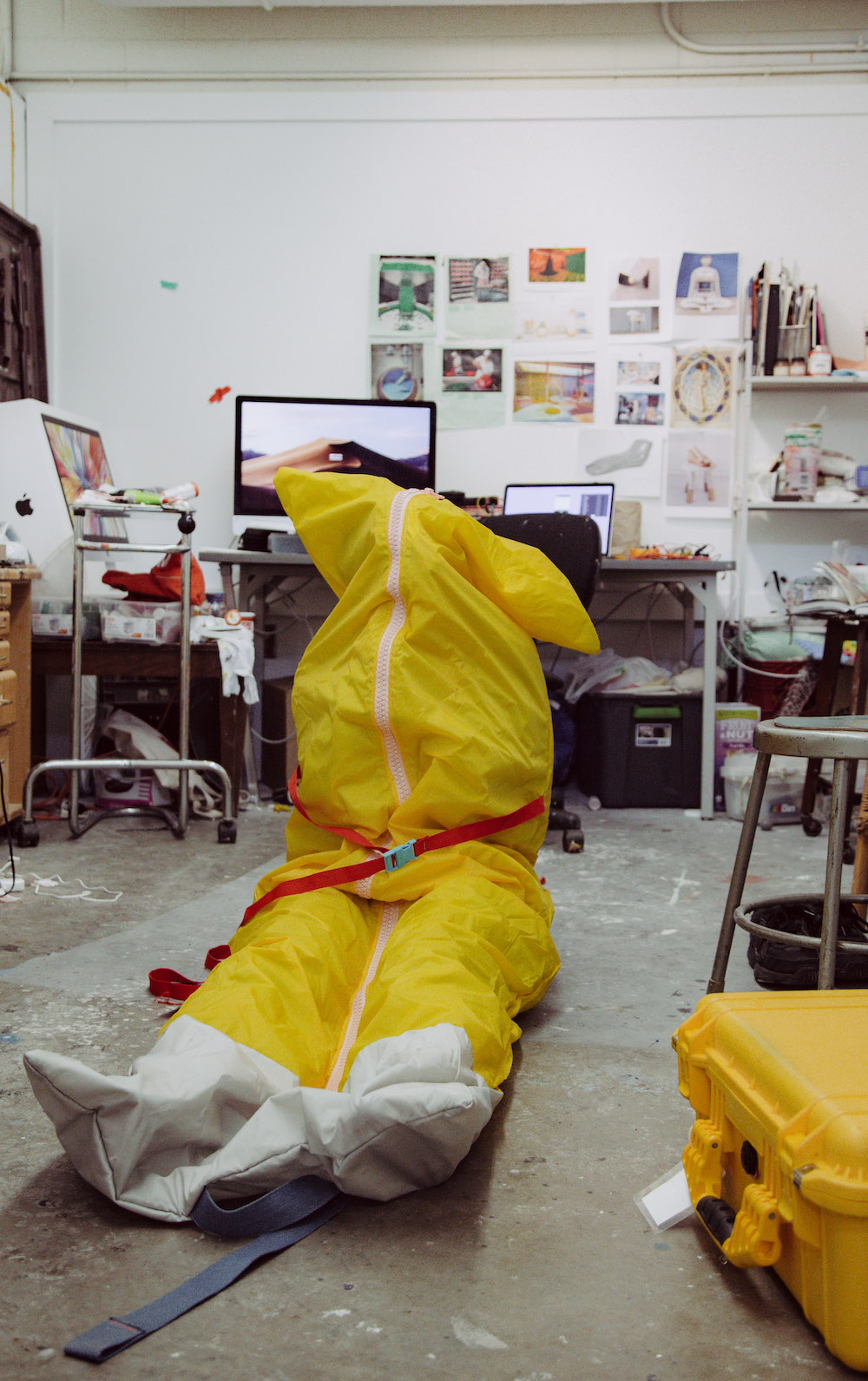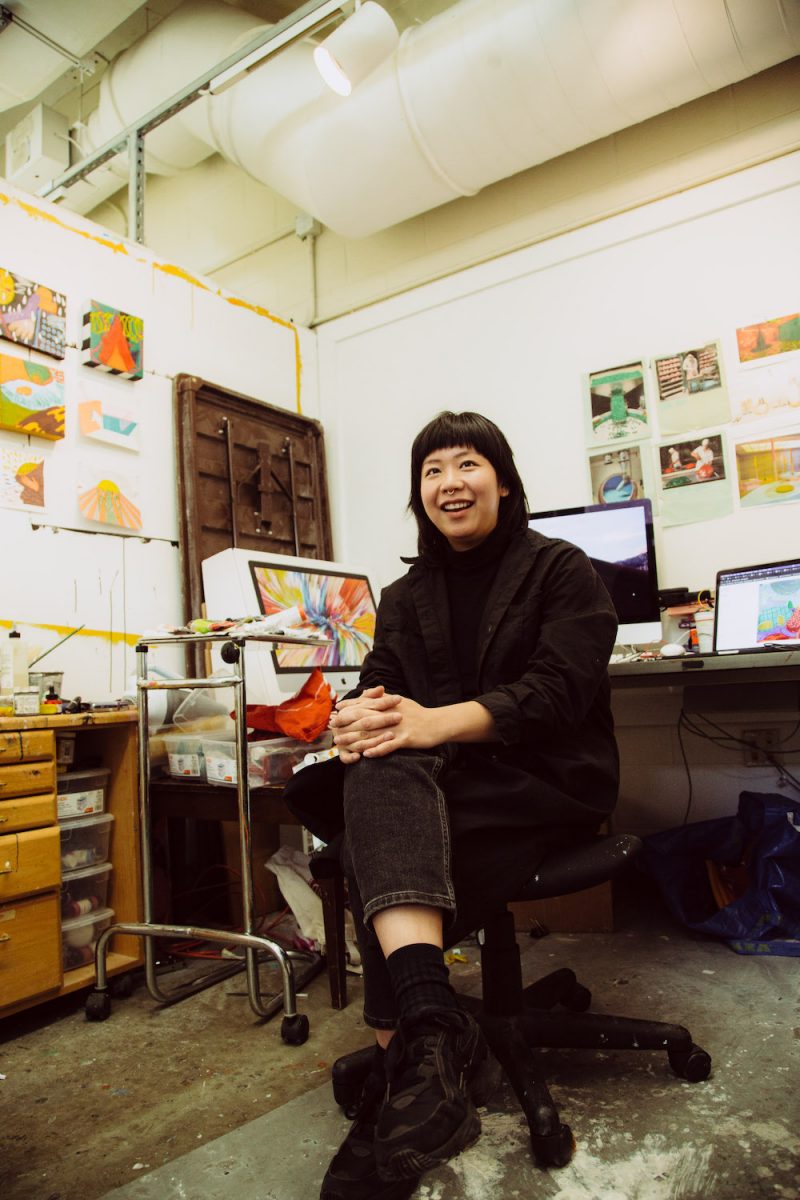You Wu’s studio wall at Towson University displays a printed advertisement for a bulk amount of pre-packed meals worth $6,500, enough to last through the end of the world. Playing on the commodification of fear and capitalism’s collapse, Wu’s practice integrates technology with fibers—they are currently programming a robotic safety vest that will activate with sound when someone gets too close.
Painting used to be Wu’s primary medium, and when I saw their work for the first time I was immediately enamored with paintings that resemble technicolor aquarium landscapes. I wanted to interview Wu based on the strength of those paintings, but it was a pleasant surprise when I visited their studio and was told that the paintings were “over there,” rolled up in a corner. Wu’s practice has evolved since they graduated from MICA with a BFA in Painting in 2017. Currently the Studio Art MFA candidate’s focus is primarily making neon objects that are variations of leisure and sport products, a commentary on the commodification of health via wellness/athleisure culture.
Wu credits Hieronymus Bosch as a significant influence, whose hyper-surreal work has greatly informed their work in graduate school. For a piece in the Creative Alliance group exhibition On the Verge: 25 New and Emerging Artists, Wu created an artificial pool where visitors could suspend reality and pretend they were engaging in a leisure activity in the midst of the crowded gallery. This playful manipulation of objects to create immersive works where viewers can have a tactile experience is the hallmark of Wu’s practice. Like a slantwise Bosch, Wu’s work subverts reality skillfully.
Since 2017, Wu has only purchased black clothing, a choice that seems antithetical to the expressive neon works they create. But after visiting their studio it all makes sense: the studio is an extension of the hybridization of their practice. The mundane and the excessive, and the delightful giving way to the severe and morbid—neon-colored body bags/sleeping bags, ineffective barbells sewn out of cloth, harnesses—this shift from the paintings they made before is at once severe and graceful.
The studio walls are intentionally sparse to help Wu focus on whatever new thing they are making. Wu’s dedication to creation is admirable, and this attention to detail translates across their work, a playful engagement with language and craft that stitches meaning into neon fabric objects.
Artist: You Wu
Pictured wearing: Adidas shoes, Everlane jeans, Uniqlo turtleneck, shirt dress from Zara worn as a jacket.
Instagram: @you__wu
Graduate Institution: Towson University, Studio Art MFA
Cost of attendance (including tuition, room & board): $29,198 per year (MD Resident, on/off campus)
Photos by Schaun Champion
